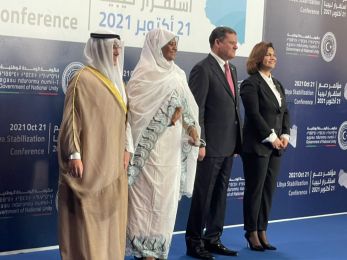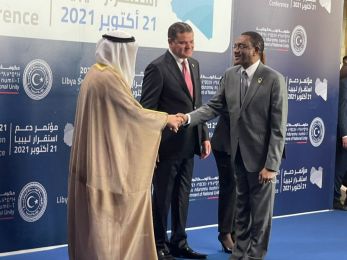COVID-19 fuels slowest rate of childhood vaccination in three decades, leaving millions at risk
Geneva, Switzerland (PANA) - Official data published by UN agencies on Friday shows the largest sustained decline in childhood vaccination rates in approximately 30 years, with 25 million infants missing out on lifesaving shots.
The figures released by the World Health Organization (WHO) and UN Children’s Fund UNICEF, show the percentage of children who received three doses of the vaccine against diphtheria, tetanus and pertussis (DTP3) – a marker for immunization coverage within and across countries – fell five points between 2019 and 2021, to 81 per cent.
The 25 million children who missed out on doses of DTP through routine immunization services last year, is two million more than in 2020, and six million more than in 2019, “highlighting the growing number of children at risk from devastating but preventable diseases”, said a press release issued by the UN agencies.
The decline was due to many factors including an increased number of children living in conflict and fragile settings where immunization access is often challenging.
Increased misinformation on social media and COVID-19 related issues such as service and supply chain disruptions, resources being diverted, and containment measures that limited access to jabs, also played a part.
“This is a red alert for child health. We are witnessing the largest sustained drop in childhood immunization in a generation. The consequences will be measured in lives,” said Catherine Russell, UNICEF Executive Director.
“While a pandemic hangover was expected last year as a result of COVID-19 disruptions and lockdowns, what we are seeing now is a continued decline.
“COVID-19 is not an excuse. We need immunization catch-ups for the missing millions, or we will inevitably witness more outbreaks, more sick children and greater pressure on already strained health systems.”
Some 18 million of the 25 million children missing out, did not receive a single dose of DTP during the year, the vast majority of whom live in low and middle-income countries, with India, Nigeria, Indonesia, Ethiopia and the Philippines recording the highest numbers, the agencies note.
Myanmar and Mozambique are among the countries with the largest relative increases in children who did not receive a single vaccine between 2019 and 2021.
Globally, over a quarter of the coverage of HPV vaccines that was achieved in 2019 has been lost.
This has grave consequences for the health of women and girls, as global coverage of the first dose of human papillomavirus (HPV) vaccine is only 15 per cent, despite the availability of a vaccine for the past 15 years on the global market.
The agencies said they had hoped 2021 “would be a year of recovery during which strained immunization programmes would rebuild” following the first year of the pandemic. Instead, DTP3 coverage was set back to its lowest level since 2008 which, along with declines in coverage for other basic vaccines, pushed the world off-track to meet global goals, including the immunization indicator for the Sustainable Development Goals (SDGs).
The decline in immunization is happening against a backdrop of rapidly rising rates of severe acute malnutrition.
“A malnourished child already has weakened immunity and missed vaccinations can mean common childhood illnesses quickly become lethal to them. The convergence of a hunger crisis with a growing immunization gap threatens to create the conditions for a child survival crisis.”
Vaccine coverage dropped in every region, with East Asia and Pacific recording the steepest decline, down nine per cent in just two years.
“Planning and tackling COVID-19 should also go hand-in-hand with vaccinating for killer diseases like measles, pneumonia and diarrhoea,” said Dr. Tedros Adhanom Ghebreyesus, WHO Director-General. “It’s not a question of either/or, it’s possible to do both”.
Some countries successfully maintained a high rate of coverage in routine immunizations, such as Uganda, which managed to roll out a targeted COVID-19 vaccination programme to protect priority populations, including health workers.
Pakistan returned to pre-pandemic levels of coverage thanks to high-level government commitment and significant catch-up immunization efforts.
Monumental efforts will be required to reach universal levels of coverage and to prevent outbreaks, the WHO and UNICEF warned.
Inadequate coverage levels have already resulted in avoidable outbreaks of measles and polio in the past 12 months, underscoring the vital role of immunization in keeping children, adolescents, adults, and societies healthy.
-0- PANA MA 15July2022






